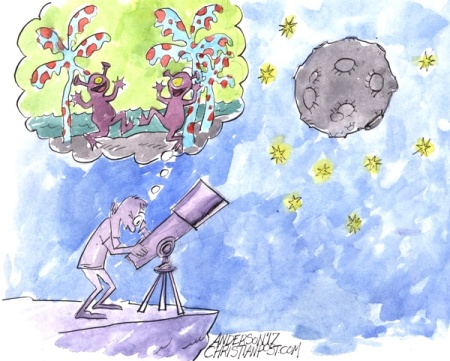We Are Not Alone in the Universe

There's already a world of evidence that life on Earth is unique and intelligently-crafted. But here are seven more pieces of evidence.
In the new movie, "Arrival," a group of scientists try to break the language barrier between humanity and an extraterrestrial race that's landed on Earth. These visitors have not come to make war, but to offer us a gift. I won't spoil it for you, but I will say that the film is pervaded by a sense of loneliness and a longing for kinship with someone beyond our world.

In this sense, "Arrival" is far from the only alien-related fiction in the news. Last month NASA set off a veritable media shower of conjecture when it announced the discovery of several "earth-like" planets orbiting a nearby star. The kind of breathless speculation journalists churned out about this red dwarf and its seven planets was worthy of a Brothers Grimm fairytale.
The Independent proclaimed, "NASA's 'Holy Grail.'"
National Geographic chimed in, "Seven alien 'Earths' found orbiting nearby star."
The Sun declared this new solar system "could be teeming with 'exotic' alien lifeforms."
And the Toronto Star offered a more touching angle, writing that "the universe looks less lonely" now.
But it was NASA's own illustrations, released alongside the original research in the journal Nature, that really sent the hype into orbit. They include artist's impressions of tantalizingly Earth-like planets, several with blue-and-green surfaces and liquid water.
What was the evidence behind these fanciful drawings and headlines? Not much, as it turns out. Here are the facts. The TRAPPIST-1 system is forty light-years distant, which means absent the invention of warp drive, we won't be visiting anytime soon. The seven terrestrial planets, thought to be about the size of Earth, orbit a star much smaller, dimmer, and cooler than our Sun.
Three of the planets circle the so-called "Goldilocks zone," or the region in which liquid water is theoretically possible. But their orbits are tiny compared with our own, meaning all three are probably tidally locked. This means one side is trapped in perpetual freezing darkness while the other is constantly scorched by the star.
David Klinghoffer at Evolution News points out that NASA has already admitted the problem with red dwarfs like TRAPPIST-1 as hosts for life. Besides being tidally locked, planets in the habitable zone of such stars are probably bathed in radiation that would kill most life.
In other words, talk of teeming planets and a less lonely universe was a little premature. But worlds of the right size orbiting the right distance from the right kind of star are only three of the known prerequisites for life. As I explained a couple of years ago in the Wall Street Journal, we now know of dozens of such criteria that must be fulfilled for life to exist. So the likelihood of any of these new planets meeting them all is slim to none.
Yet the kind of speculation that swirled around this discovery has become all-too-familiar to those who follow space exploration. The longing for life beyond our planet is obsessive. For decades, we've poured resources into the search for celestial neighbors, hoping to establish in real life the kind of contact portrayed in "Arrival." But the stars, despite our best efforts, have proved silent and barren.
But in another sense, our Sun, Earth, and the TRAPPIST-1 system are anything but silent! They declare a cosmic Intelligence Who's both infinitely mysterious and intimately knowable.
Christians recognize that our planet was uniquely designed and fine-tuned to support life — and that's putting it mildly. Our place in the universe is nothing less than a miracle. So whether there's life on other planets or not, we can say with confidence that we are not alone. Because the Being Who placed these celestial longings in our hearts dwarfs our strangest science fiction.
Originally posted at breakpoint.org.





















